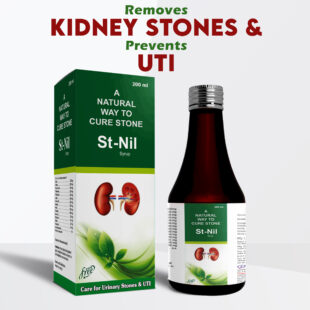- Your cart is empty
- Continue Shopping
Protect Your PC from Windows Cracks
In today’s digital landscape, the allure of free software can be hard to resist. However, using pirated software, especially cracked versions of Windows, poses significant risks to your PC and personal data. Understanding these threats and taking proactive measures is crucial to ensure your system’s security and integrity.
Software piracy is not only illegal but also a gateway to various cyber threats. When you use a pirated copy of Windows, you compromise the built-in security features that protect your PC. Cracked software often comes with malicious additions that can lead to severe consequences, including data breaches and system instability.
Crackers use tools like keygens, patches, and cracks to bypass software licenses. While these tools may provide temporary access to premium features without payment, they often come at the cost of your security. Keygens generate fake activation keys, while patches and cracks alter the original program files, making them susceptible to malware and other cyber threats.
To protect your PC from the dangers of cracked Windows software, it is essential to understand the implications and adopt safe computing practices. Always use genuine software and purchase legitimate licenses from authorized vendors. Regularly update your operating system and install robust antivirus programs to detect and prevent potential threats.
Understanding the Risks of Windows Cracks
Using cracked versions of Windows or any other software might seem like an easy and cost-effective solution to avoid paying for a license. However, this approach comes with significant risks that can outweigh the immediate benefits. Understanding these risks is crucial for anyone considering using a windows 10 pro activation key obtained through unofficial channels.
Security Vulnerabilities
Cracked software often bypasses the activation and security measures put in place by legitimate developers. This makes your system more vulnerable to malware, viruses, and other security threats. Keygens and patches used to crack software frequently contain malicious code, designed to exploit your system and compromise your personal information.
System Instability
Using a cracked version of Windows can lead to system instability. These cracks are not officially supported and can cause unpredictable behavior, frequent crashes, and compatibility issues with other software and updates. The unauthorized changes made to the operating system can disrupt its normal functionality and leave you without critical updates and security patches.
Legal Consequences of Using Cracked Software
Using cracked software, including cracks, keygens, and patches, to bypass software licenses can lead to serious legal consequences. Piracy is not only unethical but also illegal, and users of such software may face significant penalties. Here are some key legal implications:
- Fines: Individuals caught using or distributing cracked software may be subject to hefty fines. These fines can range from hundreds to thousands of dollars, depending on the extent of the infringement.
- Legal Action: Software companies actively pursue legal action against piracy. They can file lawsuits against individuals and organizations using unlicensed software, leading to costly legal battles and potential settlements.
- Criminal Charges: In severe cases, using or distributing cracked software can result in criminal charges. Convictions can lead to imprisonment, especially if the piracy operation is large-scale or involves significant financial loss to the software company.
- Business Impact: For businesses, using cracked software can result in more than just legal trouble. It can damage the company’s reputation, lead to loss of clients, and result in significant financial losses due to legal fees and fines.
- Software Blacklisting: Software companies may blacklist users or businesses found using cracked software. This means they could be denied access to legitimate licenses and support in the future.
It’s crucial to understand that the risks associated with using cracked Windows software far outweigh any perceived benefits. Obtaining legitimate licenses not only supports developers but also ensures users avoid these serious legal consequences.
Reliable Methods to Identify Cracked Software
Piracy is a persistent issue in the software industry, particularly on Windows platforms. Identifying cracked software is crucial for maintaining system security and integrity. Here are reliable methods to detect unauthorized software:
1. File Hash Check: Compare the file hash of the software installer or executable with the official version provided by the developer. Cracked software often modifies these files, resulting in different hash values.
2. Suspicious File Names: Look for common terms like “crack,” “keygen,” or “patch” within file names or directories. These indicate files designed to bypass activation or licensing mechanisms.
3. Missing Activation Prompts: Legitimate software typically prompts users for activation keys or licenses. Cracked versions may bypass these prompts altogether.
4. Behavior Analysis: Monitor the software’s behavior. Cracked software may exhibit unexpected crashes, unusual network activity, or modifications to system files.
5. Digital Signatures: Check for valid digital signatures on executables. Cracked software often lacks authentic signatures or uses invalid certificates.
6. Version Discrepancies: Compare the software version number with the latest official release. Cracked versions may be outdated or have inconsistent versioning.
7. Source Reputation: Download software only from trusted sources. Torrent sites and unofficial download portals are more likely to distribute cracked software.
8. Activation Methods: Investigate how the software is activated. Cracked versions may use unconventional activation methods or require disabling security features.
By remaining vigilant and using these methods, users can mitigate the risks associated with cracked software and protect their Windows systems from potential vulnerabilities.
Effective Antivirus Solutions for Protection
Introduction
Protecting your system from threats like keygens, cracked software, unauthorized activations, patches, and other forms of piracy on Windows is crucial to maintaining security and stability.
Recommended Antivirus Software
- Norton Antivirus: Known for its robust malware detection and real-time protection, Norton offers comprehensive coverage against malicious software that often accompanies cracked software downloads.
- Bitdefender Antivirus Plus: A top choice for its advanced threat defense capabilities, Bitdefender effectively blocks malware, phishing attempts, and potential exploits from pirated applications.
- Kaspersky Anti-Virus: With a strong reputation in the cybersecurity industry, Kaspersky provides reliable protection against keygens and activation exploits, ensuring your system remains safe from unauthorized software.
These antivirus solutions not only detect and remove existing threats but also provide proactive measures to prevent future infections, safeguarding your PC from the risks associated with cracked software.
Best Practices for Safe Software Installation
When installing software on your Windows system, it’s crucial to follow best practices to avoid potential risks associated with piracy and malware. Here are some essential tips:
| Tip | Explanation |
| 1. Use Official Sources | Download software only from official websites or trusted sources to ensure authenticity and minimize the risk of downloading cracked or pirated versions. |
| 2. Verify Software Integrity | Before installation, verify the digital signatures and checksums provided by the software publisher to ensure the software has not been tampered with. |
| 3. Avoid Cracks and Keygens | Avoid using cracks, keygens, or unofficial patches to bypass software licenses. These tools often contain malware or compromise your system’s security. |
| 4. Keep Software Updated | Regularly update your software with official patches and updates provided by the developers. This helps protect against vulnerabilities that can be exploited by malware. |
| 5. Read License Agreements | Always read and understand the software’s license agreement before installation. This informs you about the terms of use and any potential risks. |
| 6. Use Antivirus Software | Install and maintain reputable antivirus software to scan and detect any malware or suspicious files that may be included in downloaded software. |
Why You Should Avoid Cracked Windows OS
Using cracked versions of Windows OS poses significant risks to your computer and personal data. Here’s why:
- Legal and Ethical Issues: Cracked software violates software licensing agreements and intellectual property laws.
- Security Vulnerabilities: Cracks and keygens often contain malware or backdoors that can compromise your system’s security.
- Unreliable Activation: Cracked Windows may not receive updates or support, leaving your system vulnerable to bugs and security threats.
- Potential Malware: Downloading cracks from untrusted sources exposes you to the risk of installing additional malware alongside the crack.
- Compromised Functionality: Cracked versions may lack full functionality or stability, leading to performance issues and crashes.
Avoiding cracked Windows ensures you have a legitimate software version with proper activation and support, safeguarding both your PC and personal information.










